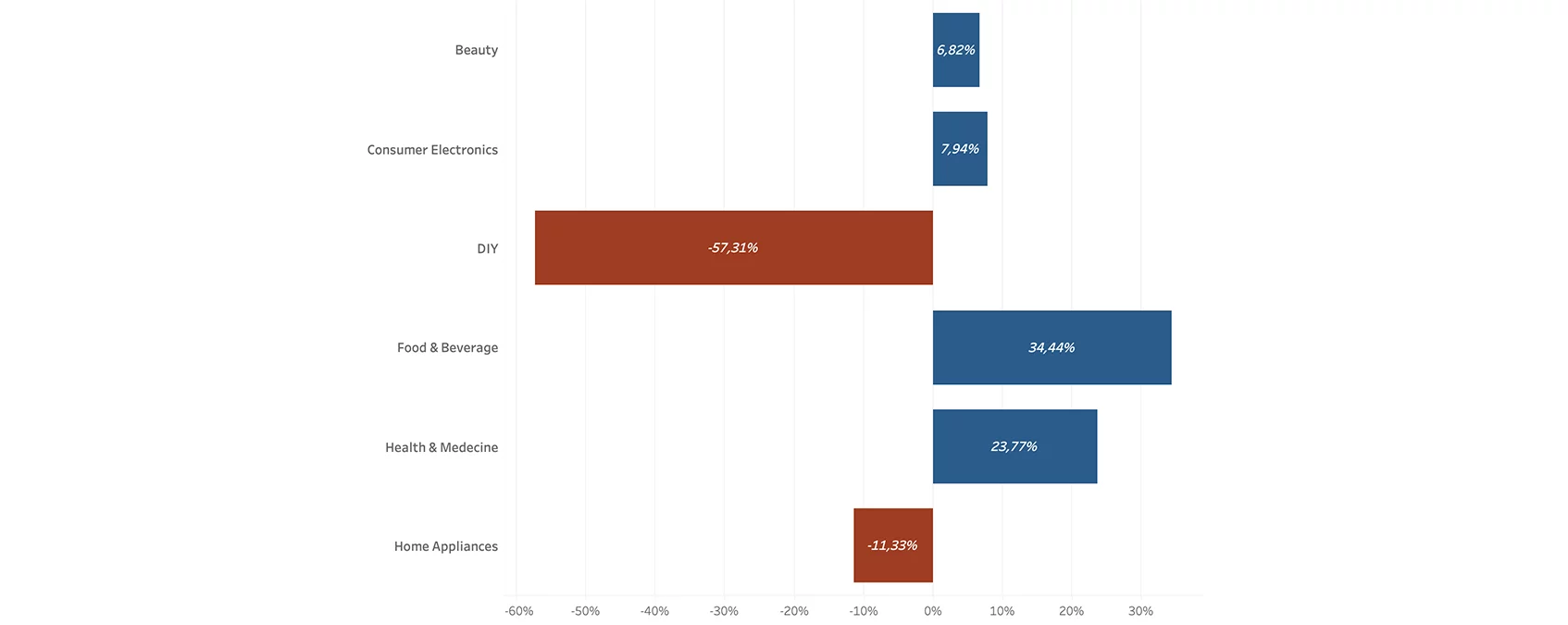How to take off with a falling-down e-commerce

In Q1 of 2022, global digital sales went down 3% from the previous year, becoming the first-ever drop in the 9-year history of the global online shopping statistics resource Salesforce Shopping Index. Amazon has also recently declared its lowest revenue increase since 2001 and issued a numbing forecast for an e-commerce growth slowdown.
Another indicator of the poor mood in e-commerce is the falling stock prices of large online platforms. Investors fear that their growth may stall and profit will be hard to come by. For instance, Wayfair shares fell by 26%, hitting a new low, Shopify – by almost 15%, and Amazon also fell by 8%.
Even with this decrease, how has Amazon managed to incur the least damage? While Shopify’s business model is based on selling online with the sellers’ fees and app integration, Amazon benefits from much greater order frequency and customer lifetime value. The good thing about Amazon is that there will always be some stock. Even if a product is temporarily out-of-stock, other sellers of the same product can serve as a substitute, something that is hard to imagine on Shopify.
Amazon’s server infrastructure, Amazon Web Services (AWS), serves as another competitive advantage as it is equally necessary in times of crisis. It is one of the most broadly used cloud platforms and therefore, offers insurance in almost any scenario that may arise.
It is also worth noting that Amazon wins also on the advertising pitch. As it is lower in the funnel and closer to the sale, brands are likely to utilize Amazon Ads long after they cut the budgets for the other ad channels.
These benefits all contribute to Amazon’s crisis resilience and serve as a direct confirmation that now is the right time to invest in strengthening your position on this platform.
Action Guide
Due to the fact that affordability is gradually becoming the leading factor in brand loyalty over quality, familiarity, and sustainability, it will be necessary for retailers to review their portfolios regarding prices, profitability, and e-commerce readiness. Then, it will be key to find a balance between stimulating demand and optimizing margins. It is also crucial, given the lack of data transparency, to understand the key factors that actually drive sales and understand the brand’s marketing efficiency.
This can be done in three ways:
- Work efficiently instead of effectively: Look more at a product and customer audience level, instead of pushing just to gain market share
- Implement automation: Bidding tools, automatic adjustments of the budget, and also testing are the possible solutions that could help track and save the budget
- Plan ahead: Figure out what your customers actually want to buy and take into account the understock and overstock data. This will help you not fail with your product catalogue
Something unique to Amazon that requires some special attention is the all-in-one offer. While it provides sellers with everything from logistics to storing, it may pose some challenges when the prices increase but bills for advertising do not stop. However, it may also be a good chance for smart brands to gain some new market potential.
How we can help
As a full-service vendor agency, we can help you implement these steps on different levels, from strategy to operations. In order to steer your marketing more efficiently, and therefore make your brand more resilient to crisis, we can help you benchmark your efficiency against the market in terms of your KPIs, but also in how efficiently you manage your account. Once we have a benchmarking system we’ll be able to pinpoint where there is either saving or growth potential, and thus increase your conversion rate and visibility through SEO optimisation, perfect product presentation, and brand stores.
We also believe that in these times where not everybody is fully occupied by shipping products, the best decision is to get back to the basics and invest in yourself. If you take this time to prepare for the inevitable revitalisation of the market, you will set your business up for success. We offer a personalized series of workshops and sessions to help take your Amazon business to the next level in our Vendor Academy.
Diversification is another surefire way to access untapped market potential but can be difficult to master. We have the experience and knowledge to help you determine which other marketplaces you can expand to, maybe more niche ones, but which fit your brand.
Another option is to target new countries where you expect the economy to recover more quickly. For instance, US e-commerce is already showing signs of recovery, certainly faster than in Europe. This could be the right time to expand internationally, and we can definitely help you make this move with the right knowledge, while you can continue focusing on your core market.
For more insights on the current situation and, more importantly, how you can cope, check out our recent webinar on the e-commerce drop, where DEPT® Managing Director Nils Zündorf discusses with DEPT® Head of Marketplaces Kevin Veenman and answer your questions live.
Insights
View all insightsQuestions?
Partner





